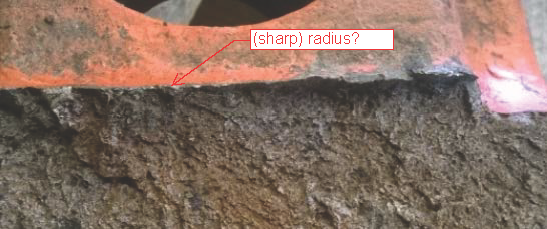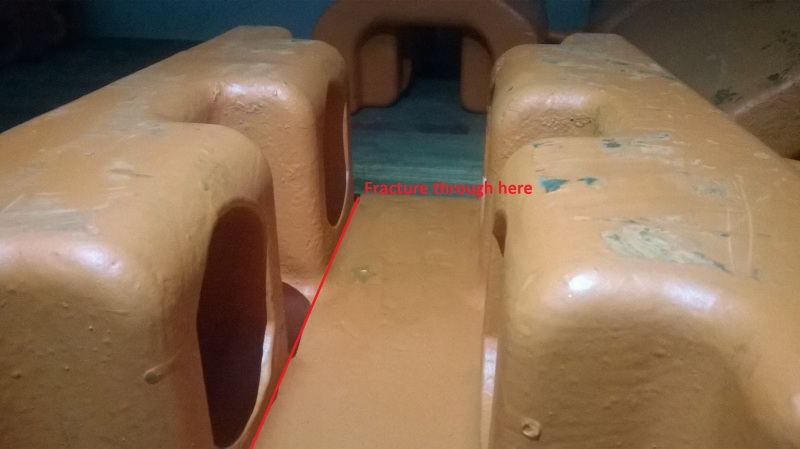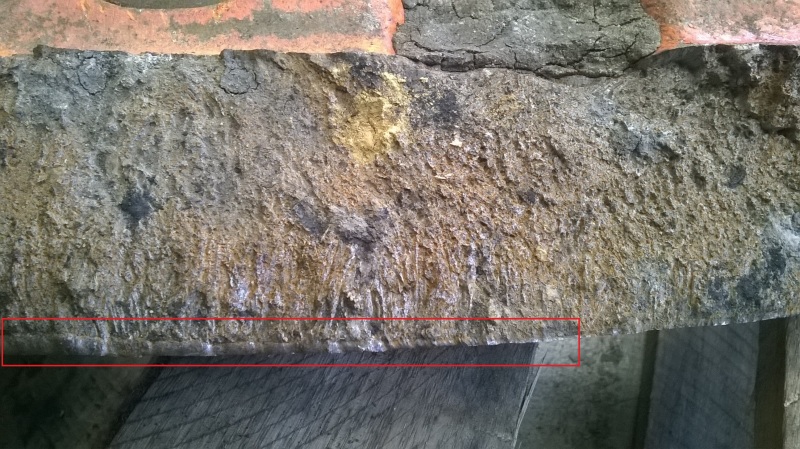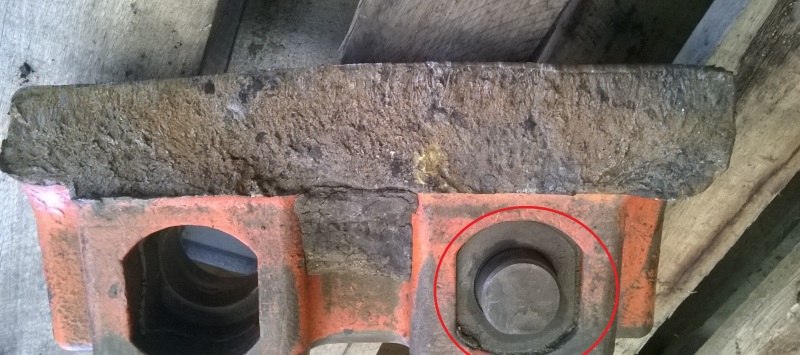Several of this part failed recently, all breaking apart at roughly same area.
It's made of cast steel (C 0.27%, Mn 0.9%, Si 1.4%, Ni 0.75%, Cr 1.85%, Mo 0.4%; Hardness 43-45 HRC).
Just got this one piece here this morning, I'm not sure if I'm reading it right trying to guess something from the fracture surface.
We are sort of based in wilderness so any kind of test will take some time. Before that happens can I please have your thought on this?
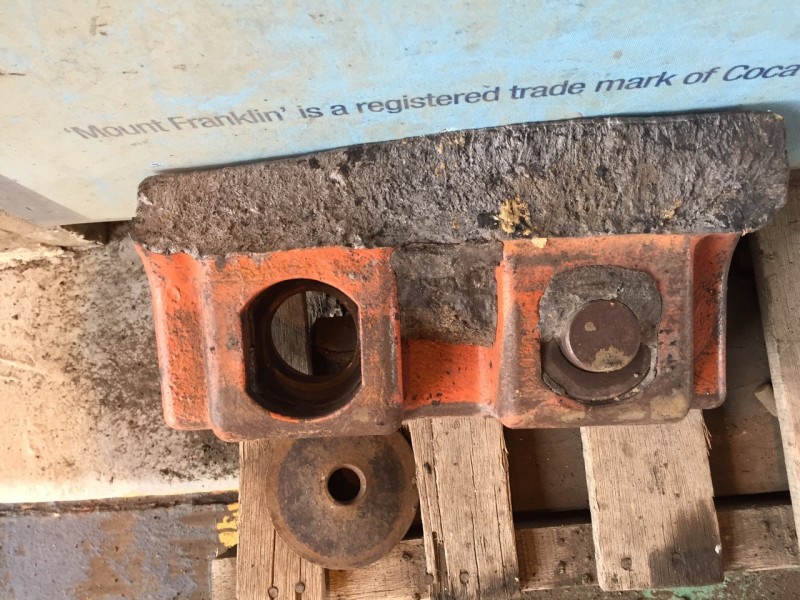
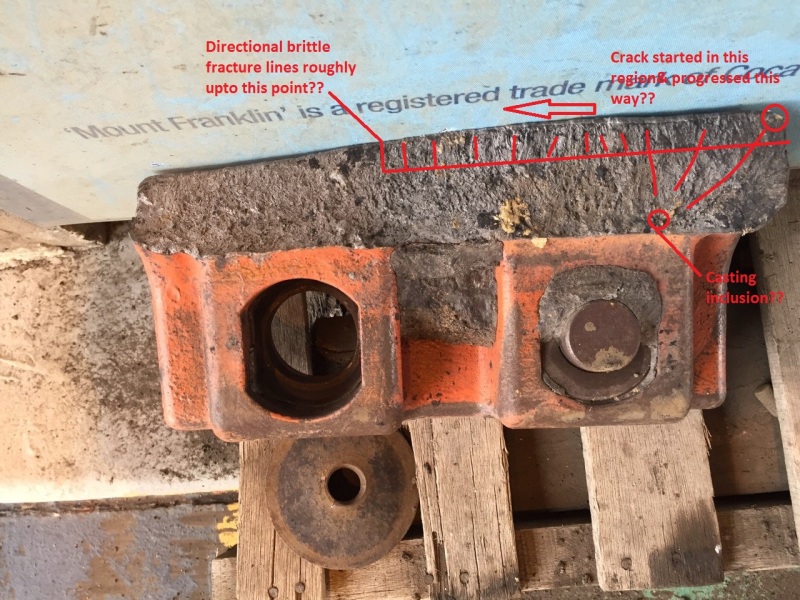
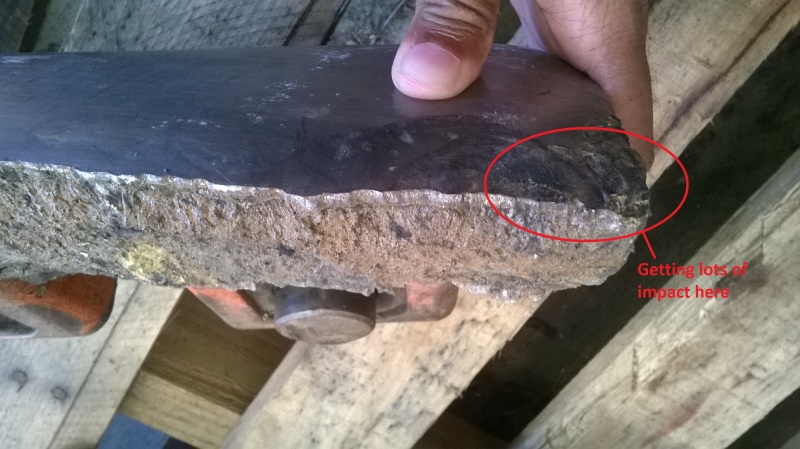
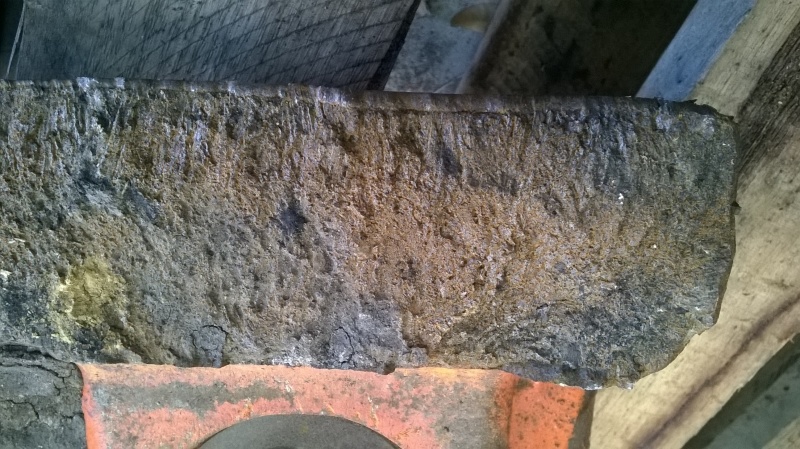
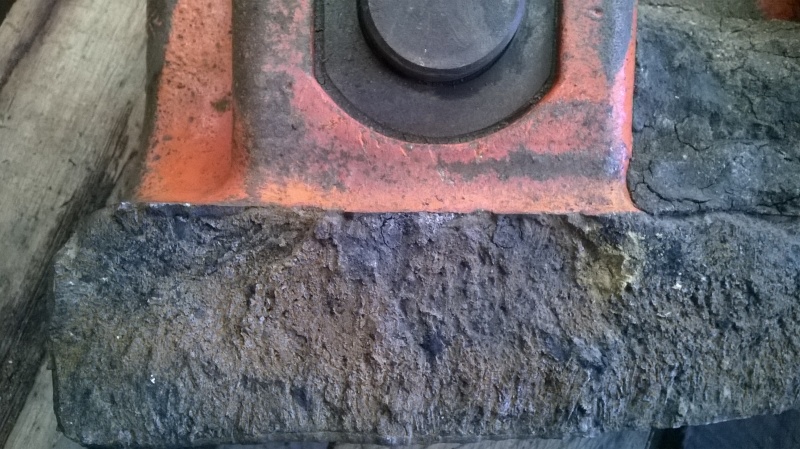
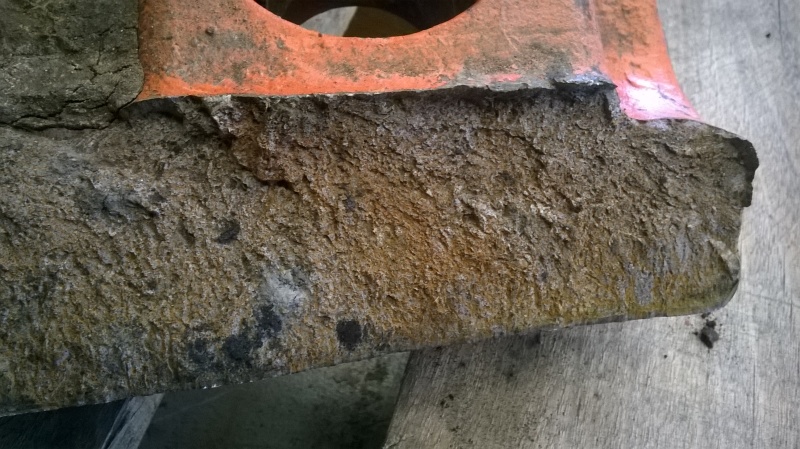
Operating conditions had changed & we are guessing the parts started taking lots of impact on area as seen on 3rd image which is causing the fracture.
Or is there anything else involved as evident from the fracture face that I'm missing?
Thanks & Regards
It's made of cast steel (C 0.27%, Mn 0.9%, Si 1.4%, Ni 0.75%, Cr 1.85%, Mo 0.4%; Hardness 43-45 HRC).
Just got this one piece here this morning, I'm not sure if I'm reading it right trying to guess something from the fracture surface.
We are sort of based in wilderness so any kind of test will take some time. Before that happens can I please have your thought on this?






Operating conditions had changed & we are guessing the parts started taking lots of impact on area as seen on 3rd image which is causing the fracture.
Or is there anything else involved as evident from the fracture face that I'm missing?
Thanks & Regards

